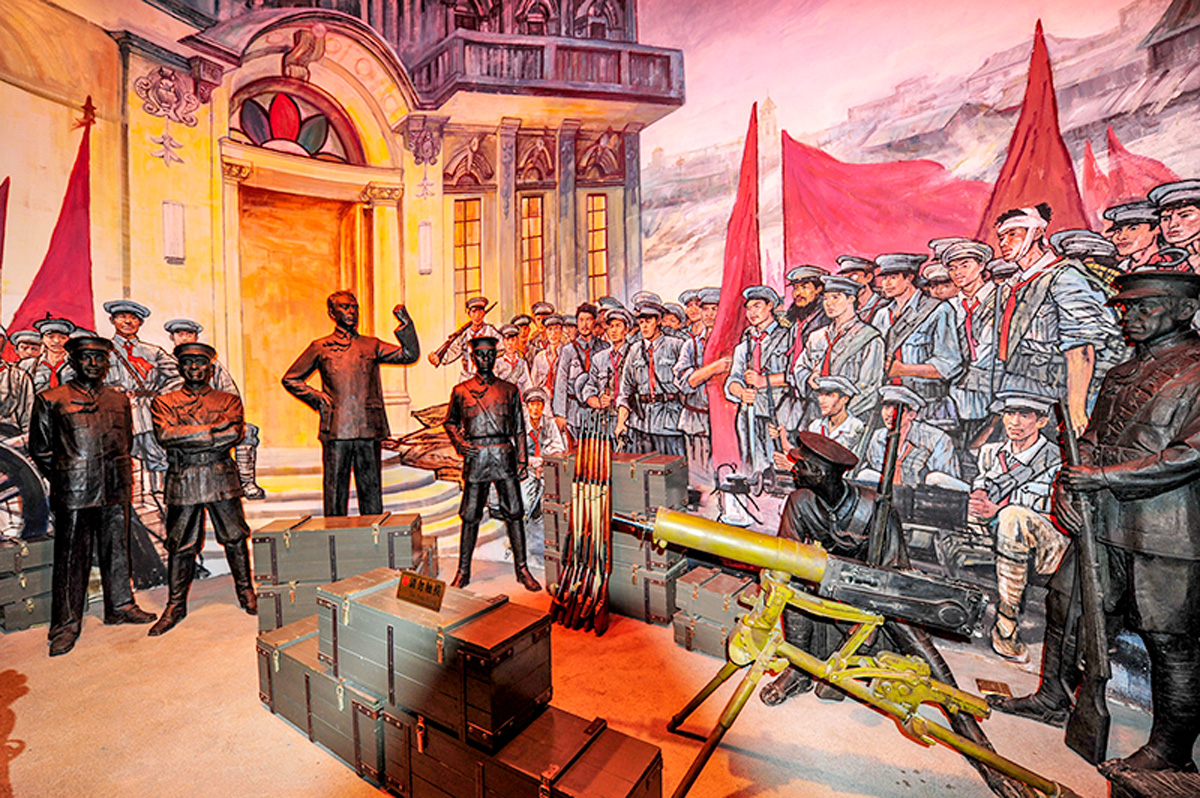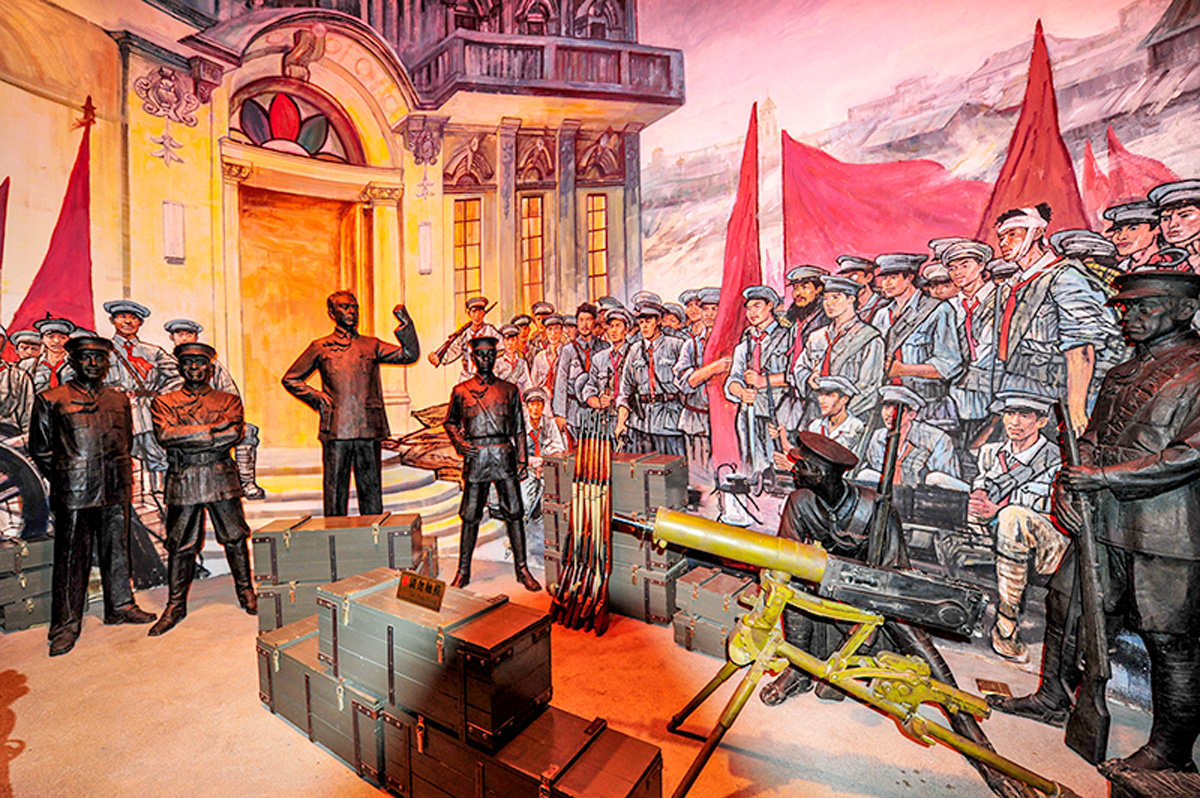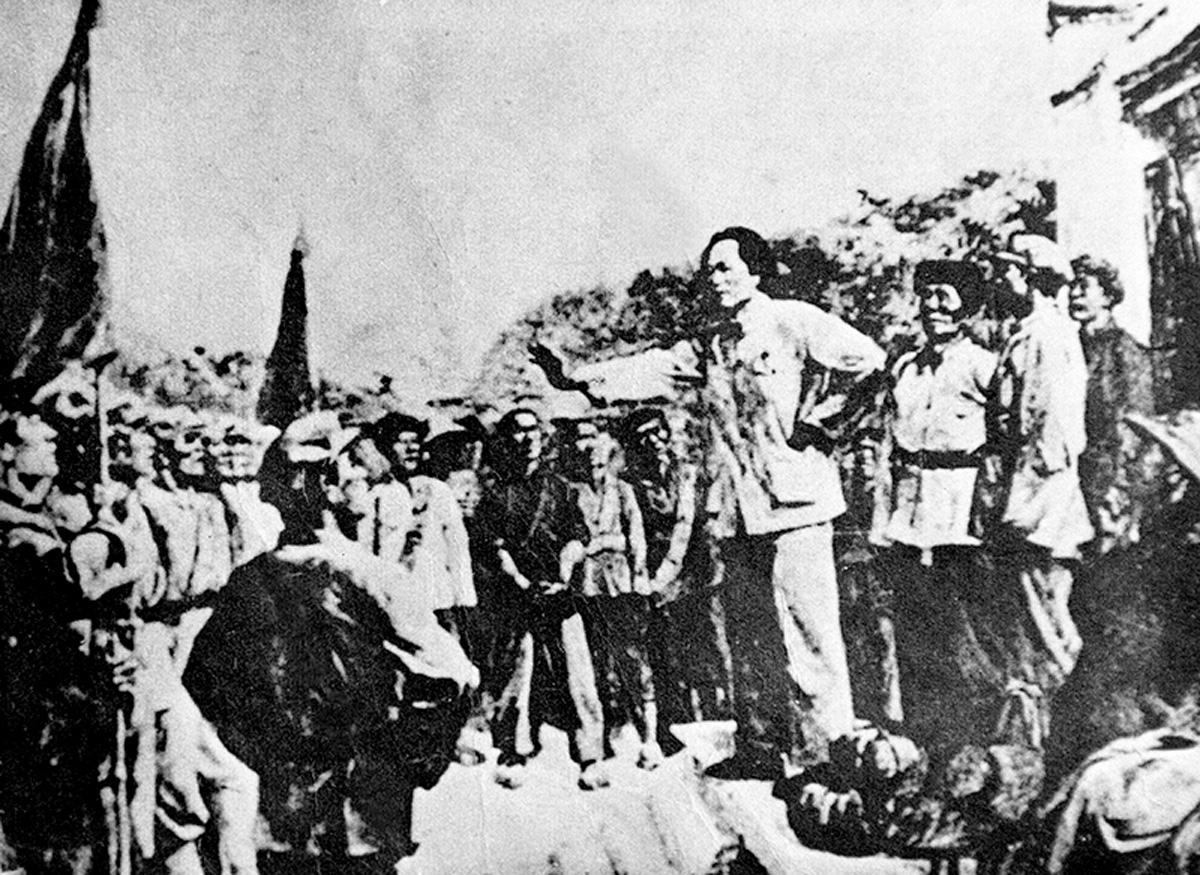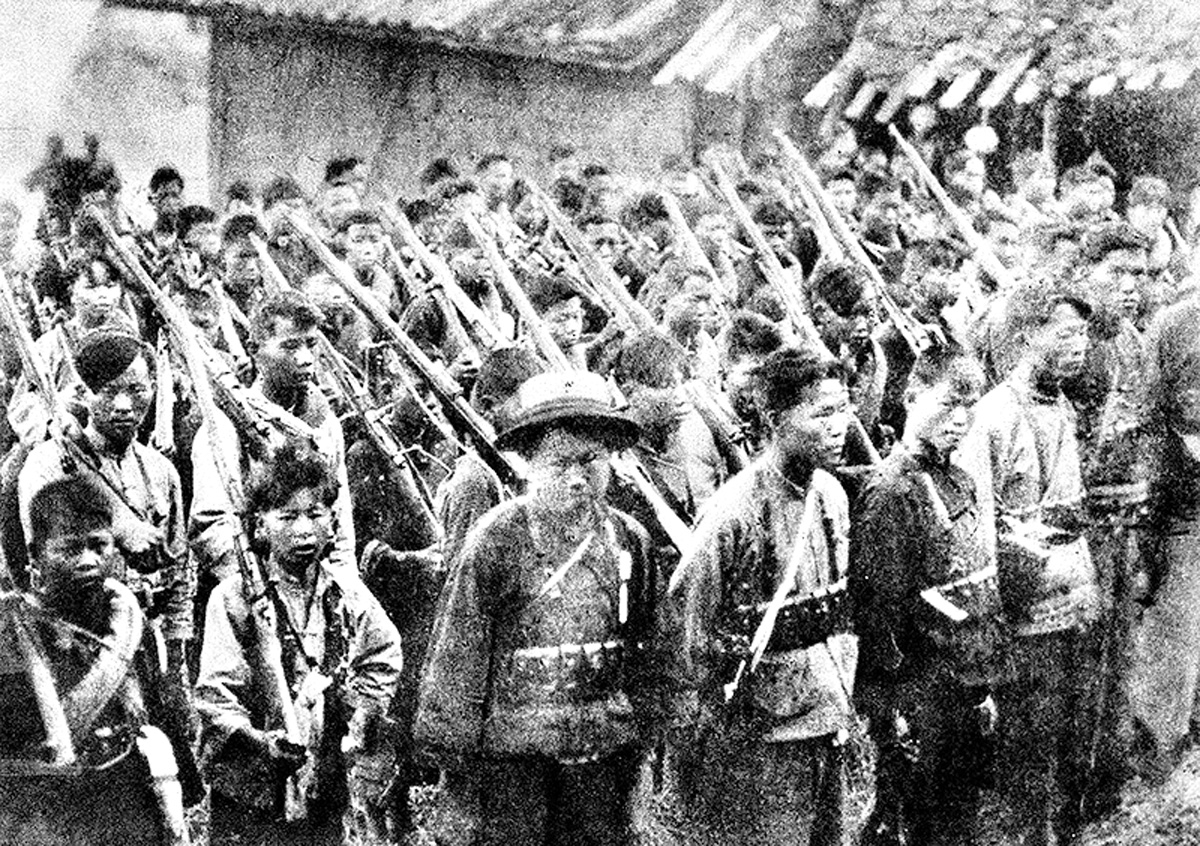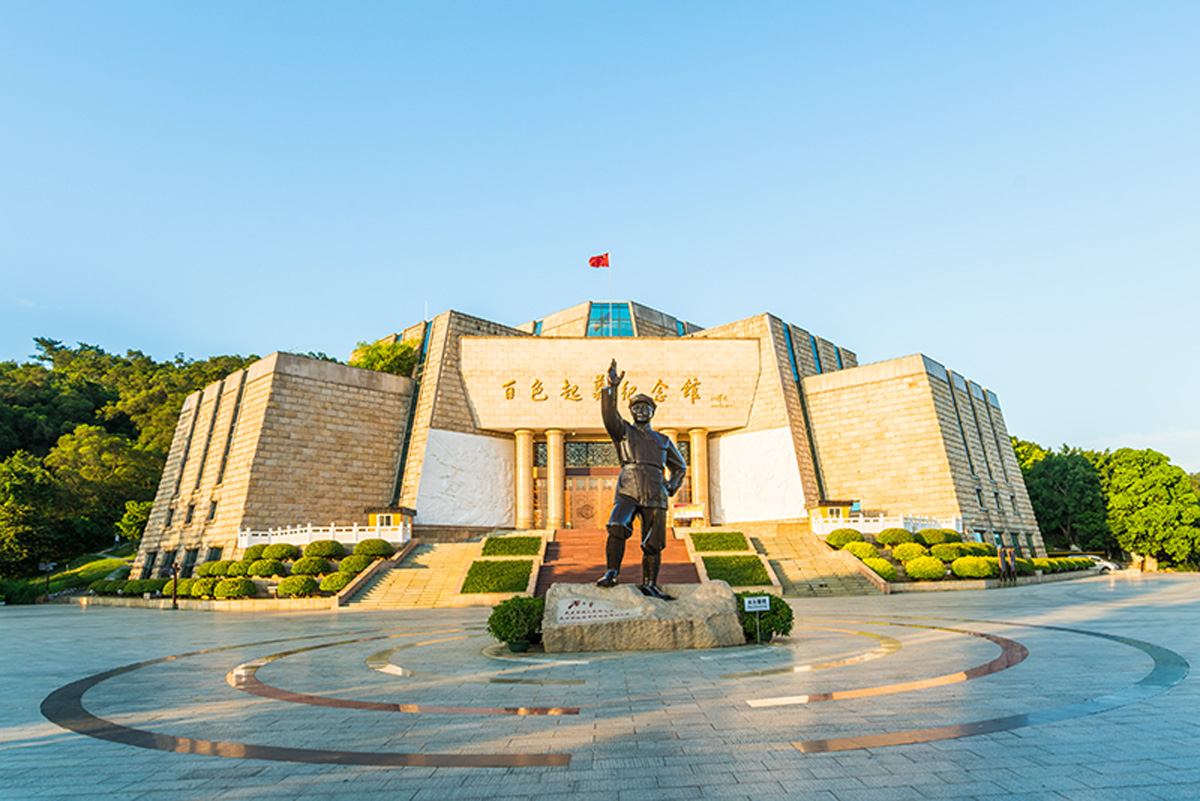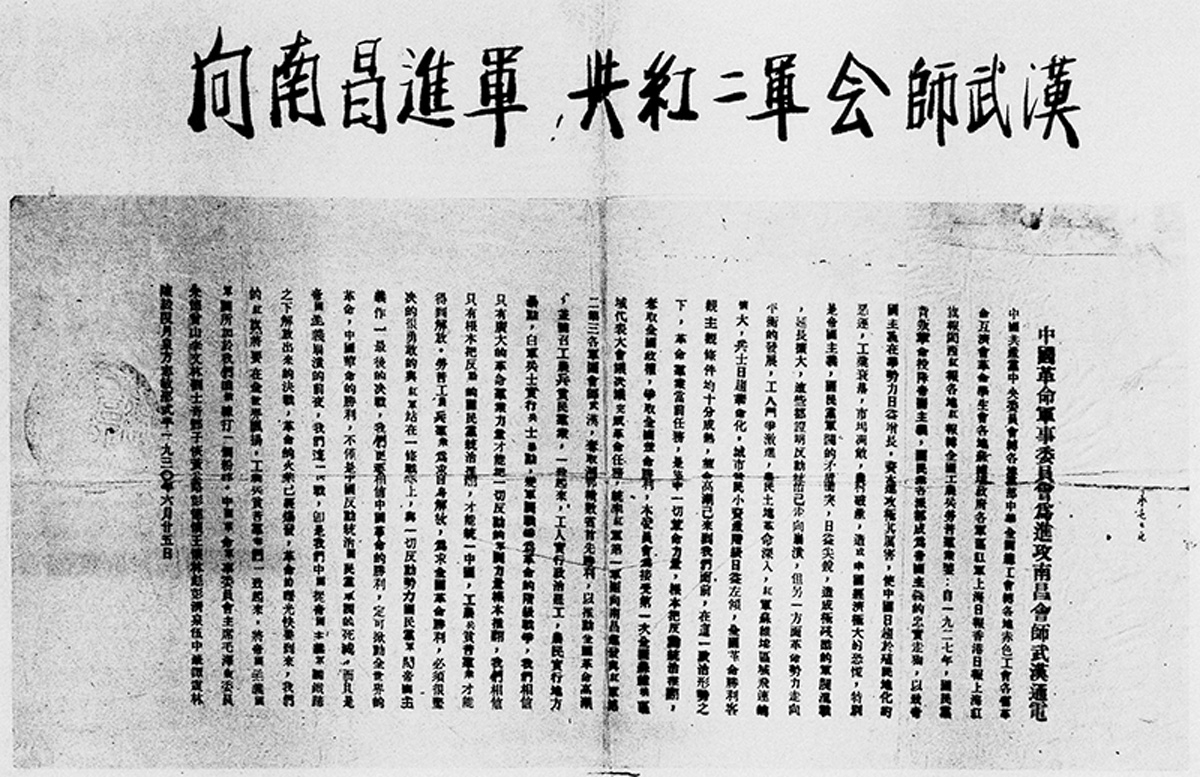During and after the Northern Expedition, a civil war broke out among the new warlords of the Kuomintang of China (KMT, 中國國民黨). Meanwhile, the armed confrontation was set off between the KMT and the Chinese Communist Party (CCP, 中國共產黨), the alliance once launched the Northern Expedition together but turned against each other halfway through the campaign. CCP members were massacred after the “Party Purge” on 12 April 1927. The Central Committee of the CCP held an emergency meeting in Hankou (漢口) on 7 August of the same year to criticise Chen Duxiu’s (陳獨秀) “right opportunism” idea; establish the policies of implementing the agrarian revolution and armed uprising; propose the idea “political power grows out of the barrel of a gun”; and re-elect Qu Qiubai (瞿秋白) as the new leader. Later, Li Lisan (李立三), Wang Ming (王明), and Bo Gu (博古) came after in the line of succession.
Before and after the “August 7th Meeting”, the CCP launched a series of armed resistance. Three of which were relatively larger in terms of scale and impact:
(1) Nanchang Uprising (南昌起事): led by Zhou Enlai (周恩來), He Long (賀龍), Ye Ting (葉挺), Zhu De (朱德), Liu Bocheng (劉伯承), etc., the uprising was initiated in Nanchang on 1 August 1927. They then swiftly withdrew from the city and headed south to Guangdong Province (廣東). This uprising was when CCP founded its army and started the seizure of power by armed force.
(2) Autumn Harvest Uprising (秋收起事): on 9 September 1927, Mao Zedong (毛澤東) and his associates led the Workers’ and Peasants’ Revolutionary Army to rebel on the border between the provinces of Hunan (湖南) and Jiangxi (江西) at the time of the autumn harvest, and then gradually shifted to countryside. In October, his troops arrived in Jinggang Mountain (井岡山) and began to establish a rural revolutionary base.
(3) Guangzhou Uprising (廣州起事): led by Zhang Tailei (張太雷), Ye Ting (葉挺), Yun Daiying (惲代英), Ye Jianying (葉劍英), Nie Rongzhen (聶榮臻), etc., the uprising erupted on 11 December 1927 failed and Zhang was killed.
Similar armed uprisings broke out nationwide. It was estimated that the CCP led no fewer than 100 armed uprisings across the country covering more than 140 counties and cities in 14 provinces. The more remarkable ones included: Hailufeng (海陸豐) Uprising in Guangdong; Huang’an (黃安) and Macheng (麻城) Uprisings in Hubei Province (湖北); uprisings initiated by Fang Zhimin (方志敏) and others in Yiyang (弋陽) and Hengfeng (橫峰) in Jiangxi; uprisings initiated by Zhou Yiqun (周逸群) and He Long (賀龍) in Honghu (洪湖) and the Hunan-Hubei border areas; uprisings initiated by Peng Dehuai (彭德懷), Teng Daiyuan (滕代遠), Huang Gonglue (黃公略) and others in Pingjiang (平江), Hunan. Meanwhile, Tang Shu (唐澍), Xie Zichang (謝子長), Liu Zhidan (劉志丹) and others initiated uprisings in Qingjian (清澗) and Weihua (渭華) in northern Shaanxi Province (陝北), and Deng Xiaoping (鄧小平) and others in Baise (百色) and Longzhou (龍州) in Guangxi Province (廣西).
|
|
Why was 1 August designated as the Army Day for the Chinese People’s Liberation Army (PLA)? |
|
|
Please see below. |
In April 1927, the KMT launched the “Party Purge” to arrest and kill many communist members, convincing the CCP the idea that “political power grows out of the barrel of a gun”. Since then, the CCP started armed struggles against the KMT.
Owing to the critical situation, the Central Committee of the CCP held an emergency meeting in Hankou on 7 August 1927 (later known as the “August 7th Meeting”). At the meeting, Mao Zedong emphasised the importance of military strength. It was later concluded to one of his famous quotes “political power grows out of the barrel of a gun”, i.e. to seize political power by force, which was influential to the future development of the CCP.
On 1 August 1927, the CCP launched the Nanchang Uprising (also known as the Nanchang Rebellion or Nanchang Insurrection), which began the CCP’s army establishment and armed seizure of power. The photo shows the sculptures of the key leaders of the Nanchang Uprising, from left: Liu Bocheng, Ye Ting, Zhou Enlai, He Long, and Zhu De.
The CCP equated revolution with insurrection in the early days. In March 1927, Mao Zedong wrote the following famous statement in his illustrious Report on an Investigation of the Peasant Movement in Hunan (《湖南農民運動考察報告》), saying “A revolution is not a dinner party, or writing an essay, or painting a picture, or doing embroidery; it cannot be so refined, so leisurely and gentle, so temperate, kind, courteous, restrained and magnanimous. A revolution is an insurrection, an act of violence by which one class overthrows another.” The statement gained traction with the revolutionary movement of the CCP. Since revolution is a riot in nature, the CCP originally described the armed uprisings in the late 1920s as “insurrection”, such as the Nanchang Insurrection and the Autumn Harvest Insurrection, which was later replaced by the term “uprising”.
Left: Nanchang City in 1927. Right: Jiangxi Hotel, the former site of the CCP Nanchang Uprising command headquarters.
A mural and statues re-enacting the Nanchang Uprising. In August 1927, the CCP once occupied Nanchang, but was later defeated by the KMT’s counterattack.
A woodcut painting titled Autumn Harvest Uprising. On 9 September 1927, Mao Zedong led the Workers’ and Peasants’ Revolutionary Army to revolt on the Hunan-Jiangxi border during autumn harvest.
An oil painting titled Marching toward Jinggang Mountain. In September 1927, Mao Zedong led the remaining troops to Jiangxi after the Autumn Harvest Uprising was suppressed. In October, they arrived in Jinggang Mountain to develop a rural revolutionary base.
In October 1927, Peng Pai (彭湃), a CCP peasant movement leader, led the Hailufeng Uprising in Guangdong and established the Hailufeng Soviet - the earliest local regime of the Chinese Soviet. In February 1928, however, the regime was defeated by the KMT.
On 11 December 1927, the CCP launched the Guangzhou Uprising. Left: The woodcut painting entitled The Great Moment depicting the CCP’s Guangzhou Uprising. Right: After the uprising failed, the banner of “Exterminate the CCP” was hung on the streets of Guangzhou.
In 1929, Deng Xiaoping and others launched an uprising in Baise, Guangxi. The photo shows the Baise Uprising Memorial Hall in Guangxi, with a statue of Deng standing in front of it.
In 1930, the CCP’s Military Commission of the Chinese Revolution printed and distributed leaflets titled Advance on Nanchang and join the Second Corps of the Red Army in Wuhan in accordance with Li Lisan’s plan in launching national insurrection centred on Wuhan and centralising the attacks by the entire Chinese Red Army on central cities. At that time, Li was the de facto leader of the CCP Central Committee. However, he lost his power as the strategy of attacking central cities to seize national power was crushed from June to September 1930.
|
|
Why was 1 August designated as the Army Day for the Chinese People’s Liberation Army (PLA)? |
|
|
On 1 August 1927, Zhou Enlai, He Long, Ye Ting, Zhu De, Liu Bocheng and others initiated the Nanchang Uprising, which fired the first shot of armed resistance against the ruling of the KMT. The armed resistance also marked the beginning of the CCP’s independent leadership of armed warfare and establishment of military forces. On 30 June 1933, the CCP’s Military Commission of the CCP Central Committee Revolutionary Army promulgate the order on About Designating ‘1 August’ as the Founding Anniversary of the Chinese Workers’ and Peasants’ Red Army. On July 11 of the same year, the Provisional Central Government of the Soviet Republic of China under the leadership of the CCP based on this proposal and decided that 1 August would be the founding anniversary of the Chinese Workers’ and Peasants’ Red Army. On 14 July, the CCP Central Committee issued A Letter to the Red Soldiers for Designating ‘1 August’ as the Anti-Imperialism and Anti-War Day and Red Army Memorial Day. Since then, 1 August has become the Army Day of the Chinese Workers’ and Peasants’ Red Army and later the CCP’s armed forces. On 15 June 1949, the Military Commission of the Chinese People’s Revolution issued an order stipulating that the PLA’s flag and emblem shall be all inlaid with the characters “1 August” as the symbol of the army. Meanwhile, 1 August of the same year was designated as the PLA’s Army Day. The August First Nanchang Uprising Memorial Museum is located at 380, Zhongshan Road, Nanchang, covering an area of 5,903 square metres. The site was originally Jiangxi Hotel, the command headquarters of the Nanchang Uprising. |
Source of most photos used in this feature piece: Fotoe (pictures 1, 2, 4, 6, 7, 8, 10), Visual China Group (pictures 3, 9), and misc. photo sources.




